
After having an impact on the motor markets of Europe and America, the manufacturer and innovator of electric motors Tesla entered China with a high profile. It is reported that since the first batch of Model S were delivered in March at the "attractive price" of CNY734,000 yuan, Tesla has attracted more and more attention in China. Tesla motors, compared with traditional vehicles, have neither an engine nor a transmission device - Tesla adopts the 18650 cobalt-acid-lithium battery provided by Panasonic and uses the battery comprising a parallel circuit of 8,000 cells to provide sufficient power.
What advanced technologies does Tesla have? What is its patent layout, especially the substantial layout of its core battery technologies?
In this paper, Beijing Kangxin Huayuan IP Consulting Co., Ltd. takes the patent applicant Tesla Motors as an example and studies the macro trend of Tesla Motors’ overall layout as well as the battery-related technologies filed by Tesla Motors since 2012 from the micro perspective.
1. Overall trend of Tesla Motors' patent applications
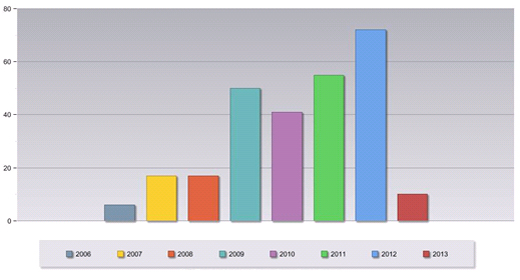
Figure 1: Trend of annual patent applications
As a high-tech company, Tesla Motors not only introduces the Internet element into the vehicle industry to realize the innovation of business mode, but pays equal attention to technical innovation and the protection of intellectual property rights, and its global patent applications have covered 286 patent families up to now (the patent applications of the same field in different countries constitute one patent family).
Figure 1 displays the trend of Tesla Motors' annual patent applications. As the figure shows, the number of patent applications of Tesla Motors generally displays a rising trend from 2006 (note: the patent applications in 2013 have not been fully disclosed) and it is expected to grow continually.
2. Regional distribution of Tesla Motors' patent applications
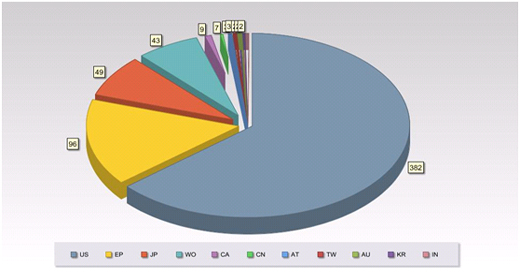
Figure 2: Regional distribution of patent applications
Tesla Motors' Model S is already marketed in the USA and Europe, and its patent applications have also been extended to many different countries and regions around the world, which indicates that there are many target markets. From Figure 2, it can be seen that most applications are filed in the USA, Europe, Japan, Canada and China.
It is noteworthy in Figure 2 that EP applications and WO applications rank the first and fourth respectively, indicating that the European Patent Applications (EP) and the International Patent Applications (WO) are two major modes of Tesla Motors' patent applications, i.e. it enters the member states of the European Union through the uniform European Patent Application and enters the countries throughout the world through the International Patent Application.
3. Technical distribution of Tesla Motors' patent applications
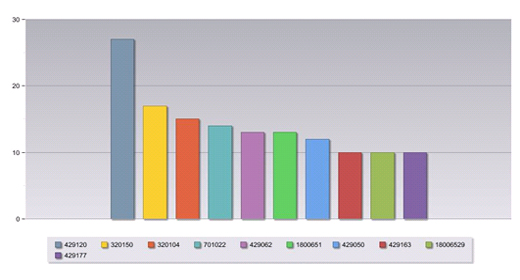
Figure 3: Rank of patent classification numbers
As most patent applications of Tesla Motors are filed in the USA, Beijing Kangxin Huayuan takes advantage of the USA patent classification numbers (UC) to learn about the key points of the patent applications.
Figure 3 displays the rank of patent classification numbers of Tesla Motors. As the figure shows, the patent applications with a high rank are the battery-related technology of heat exchange function (429120), battery-related technology of heat supervision (320150), charging technology related to vehicle-carried battery (320150) and the control and navigation technology of electric vehicles (701022). It can be seen that the key points of Tesla Motors' patent applications are the battery-related heating technologies and the charging technology of battery, etc.
4. Latest layout of Tesla Motors' battery technology
As battery-related technology is a key technology of Tesla Motors, to further understand the latest battery-related patent applications of Tesla Motors, Beijing Kangxin Huayuan has studied the battery-related patent applications of Tesla Motors since 2012 and offers the following interpretation from the micro perspective:
4.1 Types of batteries
The study shows that besides the traditional lithium battery, Tesla also adopts the metal-air battery. The latest patent of Tesla Motors (UC) indicates that it has made a major breakthrough in the field of vehicle batteries. Patents US201301875 and US20130181511A1 describe the battery as being composed of lithium ions and metal-air cells, which may enable a vehicle to drive as far as 400 miles (about 650 kilometres) with one charge.
4.2 Technical structure of the battery
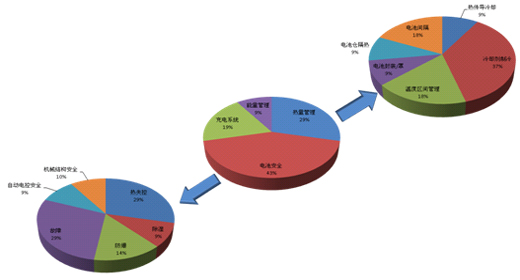
Figure 4: Technical structure of the battery
Besides the above types of batteries, we further study the divisions of Tesla Motors' battery technology. As Figure 4 shows, the battery technology mainly focuses on four parts: battery safety, heat management, charging system and energy management (power management).
A key technology related to electric motors is battery safety technology. In 2013, several Model S vehicles of Tesla were involved in fire accidents, causing it to suffer a significant negative impact. It can be seen from the above figure that Tesla pays most attention to its battery safety technology.
In addition, different from other manufacturers of electric motors, Tesla connects a huge number of small cells in parallel; therefore, how to manage the heat generated by these mass cells is also a key point of attention for Tesla.
The left part of Figure 4 describes the subdivisions of the battery safety technology. As the pie chart shows, the battery safety technology of Tesla involves failure (inspection), anti-blast, anti-damp, thermal runaway, safety of automatic electric control, safety of the mechanical structure and other safety measures.
The right part of Figure 4 describes the subdivisions of the battery's heat management technology. As the pie chart shows, the heat management technology involves the cooling by (liquid) coolant, cooling by heat transmission and other battery cooling technologies, as well as the cell interval, heat insulation of cells, cell encapsulation and other technical measures.
4.3 Details of the subdivided technology
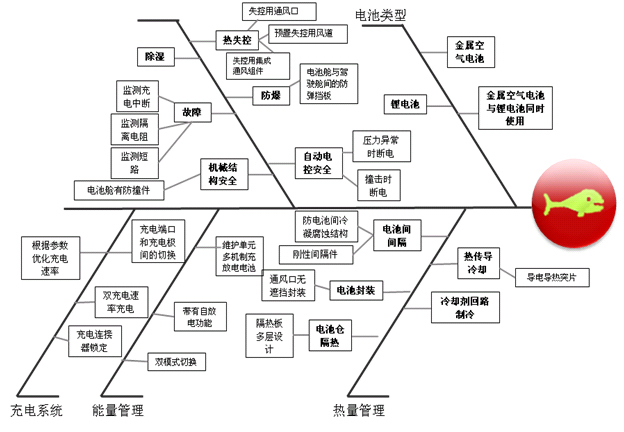
Figure 5: Subdivision of the technology
Figure 5 displays the subdivision of Tesla Motors' technology. This figure further studies the subdivided technologies and the main innovations of each subdivided technology from four aspects, including battery safety, heat management, charging system and energy management.
4.3.1 Types of batteries
The metal-air battery is also a kind of chemical battery and its underlying principle is similar to that of a dry battery, the difference being that its oxidant comes from the oxygen in the air. Compared with lithium batteries, it has the advantage of a great density of energy. Besides using lithium batteries, Tesla first introduced the technology based on which the metal-air battery can be used independently. Then, through further research and development, it developed electric motors driven by metal-air batteries and lithium batteries in combination. In electric motors driven by metal-air batteries and lithium batteries, the metal-air battery is used to charge the lithium battery or as the power source in parallel with the lithium battery; therefore, it combines the advantages of both batteries.
4.3.2 Battery safety technology
A battery may catch fire for many different reasons, but the ultimate cause is the thermal runaway of a battery. Thermal runaway is an external symptom of battery failure; as for the internal reason, it may be that the battery is squeezed, pierced or over-charged.
The battery safety technology encompasses many safety measures against thermal runaway, including safety measures when thermal runaway occurs, e.g. by providing an integrated exhaust component so that the air generated in the battery may be dissipated in a regulated way; by providing a special ventilation hole for thermal runaway; by providing a special channel for thermal runaway. In addition, to prevent the battery from being hit, a protective shield is configured under the battery package to protect the battery package. Furthermore, the battery package automatically breaks away from the power system when the vehicle is hit, and in addition, the battery compartment has an anti-hit component that absorbs collision force over the battery package, in order to prevent fire accidents due to hitting of the battery.
In addition, there is an inspection and identification solution for various battery failures from the perspective of automatic control, so as to indentify risks and ensure safety in advance, e.g. monitoring the battery for interruption during charging, monitoring for short circuits, monitoring thermal events, monitoring for the battery's expiration, etc.
4.3.3 Thermal management
As Tesla's battery technology adopts mass cells, the assembly and arrangement of the cells are very important, so as to ensure that the cells have sufficient intervals between them to insulate them from heat and prevent a chain reaction of thermal runaway between the cells.
Therefore, the interval between cells is a key point of Tesla's heat management. Tesla proposes a solution that uses both rigid intervals and an installation framework, thus maintaining a minimum interval between cells and realizing efficient heat separation simultaneously. In addition, it proposes a cell installation structure that may assemble the mass cells and prevent corrosion between the cells.
To timely dissipate the huge heat generated within the battery, the battery heat management technology of Tesla adopts various methods, including transmission of heat and coolant circuit, etc. The transmission technology utilizes conductive flanges coupled with the electric poles of the battery, which are connected to the temperature control plate through the thermal interface, and further connected to the external temperature control system. Tesla also adopts a kind of heat management system, including heat exchanger, cooling system and cooling circuit that is connected to the battery package and couples with the heat exchanger.
Similarly, to insulate the heat between the cells and the driver's cabinet, a multi-tier heat insulation plate is configured between them and above the cells.
4.3.4 Energy management
Energy (power) management technology involves the battery in standard mode and battery life mode. In the battery life mode, the operation and charging parameters that promote the battery's healthy status may be chosen. In addition, the automatic discharge function may realize energy management for high-energy batteries. Furthermore, it also provides a maintenance unit to charge or discharge the battery through multiple mechanisms.
4.3.5 Charge system
The charge system may ensure the timely charging of a battery and thus enable long distances to be driven. Tesla's technology provides some intelligent measures, i.e. the choice of charge speed in different modes and the automatic selection of optimal charge speed according to the parameters.
Through the macro and micro study of Tesla Motors' patent layout, we have obtained a preliminary understanding of Tesla's technical innovation. From the analysis of the patent layout, we can see that Tesla Motors has grasped core technologies related to the battery management system, and with the above core technologies, it is able to utilize the parallel connection between multiple traditional cells to realize large driving force even if there has been no major breakthrough in battery technology. In addition, the battery management system supports the intelligent control of vehicles by PDA, thus having the favour of high-tech lovers and environment protectionists.
Tesla's motors have already entered China, and it also introduced a great opportunity to the electric motors market. From the perspective of patent layout, Tesla Motors have taken the lead to achieve a comprehensive layout of the battery management system. It is expected that it will bring more patents into China through PCT applications. The relevant enterprises should pay close attention to the patent layout in the field of electric motors, including both the patent applications related to battery but also the patent applications related to the battery management system, so as to provide sound support for the marketing in the future.
Follow us






